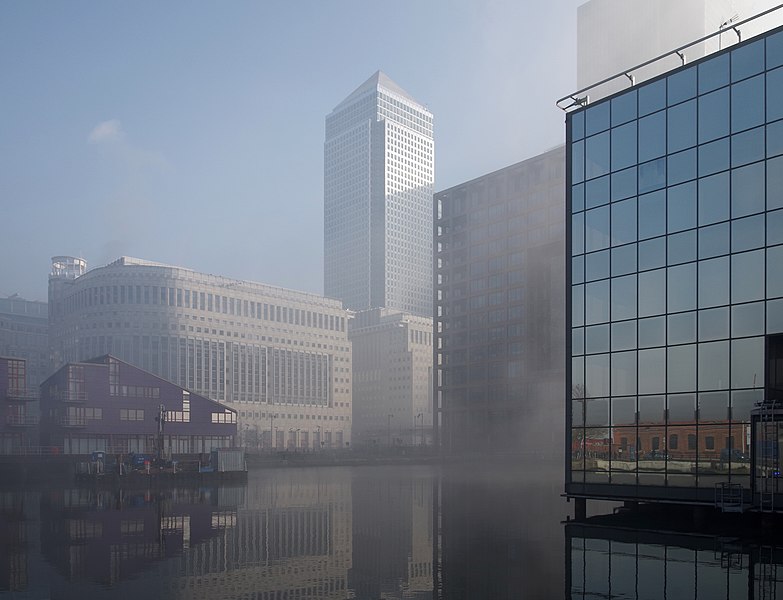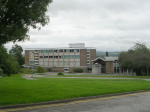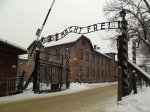
An additional 131 air quality sensors are to be installed at hospitals, schools and other priority locations in the capital, revolutionising Londoners’ access to reliable data about air pollution in
their local area. The Mayor of London, Sadiq Khan, will today mark Clean Air Day with a visit to the Royal London Hospital, one of ten hospitals with a sensor in place to monitor in real time the effects of toxic pollution, including high levels of nitrogen dioxide (NO2) which aggravates respiratory diseases.
The Breathe London Network, managed by Imperial College London and funded by the Mayor and Bloomberg Philanthropies and the boroughs, is an important part of Sadiq’s work to raise awareness of air pollution, making it easier for all Londoners to access reliable, localised, real-time air quality data. The additional sensors will bring the capital’s total to 322 sensors.
The theme of this year’s Clean Air Day event is protecting children’s health from air pollution and Sadiq is determined to continue doing everything he can to tackle poor air quality in London and protect the next generation – which is why he is expanding the world’s first Ultra Low Emission Zone (ULEZ) up to the North and South Circular roads this October.
Poor air quality stunts the growth of children’s lungs and worsens chronic illnesses such as asthma, lung and heart disease. A landmark study of the impact of London’s air pollution found children growing up in the capital and exposed to air pollution showed significantly smaller lung volume, with a loss of approximately five per cent in lung capacity. The research by King’s College London, Queen Mary University of London and the University of Edinburgh monitored children from 28 schools in Tower Hamlets, Hackney, Greenwich and the City of London which fail to meet EU nitrogen dioxide limits. A study by Imperial College London’s Environmental Research Group, commissioned by City Hall via Imperial Projects, has found that the Mayor’s air quality policies and wider improvements in air pollution will increase the average life expectancy of a child born in London in 2013 by six months.
An estimated 3.8 million Londoners live in the expanded ULEZ zone and are set to directly benefit from the scheme when it comes into operation in October. Patients and staff at the Royal London - which is home to one of the largest children’s hospitals in the UK and has one of London’s busiest paediatric A&E departments - are also set to benefit as it is situated within the expansion zone.
Along with hospital staff, the Mayor will meet a group of year six pupils from the nearby Canon Barnett Primary School which also falls within the expanded ULEZ zone.
The expanded zone covers an area 18 times larger than the existing ULEZ and will affect older, more polluting vehicles that don’t comply with strict emission standards. Although around 80 per cent of cars are already thought to be compliant, it is estimated that 100,000 cars, 35,000 vans and 3,000 lorries could be affected by the expanded zone and tighter standards every day. ULEZ expansion warning signs are being put up around the North and South Circulars to help inform motorists of the forthcoming changes following extensive awareness campaigns.
World-leading measures, including the central London ULEZ, introduced by the Mayor in his first term had already cut the number of state schools located in areas with illegal levels of pollution by 97 per cent – from 455 schools in 2016 to just 14 in 2019.
While significant progress has been made, with a substantial reduction in the number of Londoners living in areas exceeding legal limits for NO2, tens of thousands of Londoners still breathe illegally polluted air and 99 per cent of Londoners live in areas exceeding the World Health Organization (WHO) recommended guidelines for PM2.5, which are much tighter than the legal standards.
Research shows that those exposed to the worst air pollution are more likely to be deprived Londoners and from Black, Asian and Minority Ethnic communities. There is also emerging evidence linking air pollution with an increased vulnerability to the most severe impacts of COVID.
The ULEZ expansion is not only vital to achieving compliance with legal limits for air pollution but is also a key step towards meeting the more stringent health-driven World Health Organization guidelines for toxic particulate pollution by 2030.
These targets are challenging, and to meet them we need to tackle all sources of pollution. This means getting the right air quality standards adopted in the Environment Bill is a once-in-a-generation opportunity to rebuild our cities and economies to be greener, fairer, and more sustainable. Research previously published by City Hall shows achieving these standards is possible if the Government gives the Mayor the additional powers he has consistently lobbied for. The ULEZ is therefore a key part of a wide range of world-leading measures to improve London’s air quality. These include cleaning up London’s bus and taxi fleet, reducing emissions from construction and action to promote the uptake of zero emission vehicles.
The Mayor of London, Sadiq Khan, said: “The focus of this Clean Air Day is on protecting children’s health – and we know toxic air pollution in London stunts the growth of children’s lungs and worsens chronic illnesses such as asthma.
“That’s why tackling air pollution in our city has been a priority for me since I was first elected in 2016 and I’m more determined than ever to do everything I can to consign air pollution to the history books.
“I’m really proud that a further 131 air quality sensors are set to be added to London’s network, and later this year we are taking the pivotal step of expanding the world-first Ultra Low Emission Zone up to the North and South Circulars later this year, which will improve the health of all Londoners and deliver a cleaner, greener and fairer city.”
Dr Chinedu Nwokoro, Consultant Respiratory Paediatrician at The Royal London Hospital, part of Barts Health NHS Trust said: “As a respiratory doctor with a research interest in lung disease and air pollution, I am acutely aware of the impact of air pollution on child health. Children exposed to high air pollution experience restricted lung growth, increased asthma and respiratory infections, and other health effects that can begin in the womb and last through to old age. I talk to my patients about the importance of acting on air pollution and about easy steps they can take to protect themselves, and I try to model these behaviours for my own children; all of us owe it to children to act now to rescue their futures. By working together we can reduce the health impact of air pollution and create a healthy environment for our communities, now and in the future.”
Mayor of Tower Hamlets, John Biggs, said: “Improving the air quality in Tower Hamlets is one of our top priorities as we know how badly children are affected by pollution. Children in our borough have up to 10% less lung capacity than the national average because of air pollution and this needs to change.”
“To help reduce pollution and improve the air that we breathe in Tower Hamlets, we’ve introduced the Breathe Clean campaign to reduce the impact of idling engines, installed seven air quality sensors across the borough, increased the amount of cycling hangers and planted over 740 of our goal of 1,000 trees across the borough.”
Larissa Lockwood, Director of Clean Air at Global Action Plan, said: “It has been a privilege to work with staff at The Royal London Hospital to develop and use the resources to ensure health professionals are able to have crucial conversations with patients on air pollution. Health Professionals play a vital role in advising patients on the health impacts of air pollution and the Royal London Hospital is among a handful UK hospitals at the forefront of addressing this critical gap in patient advice - but they can’t do it alone. Initiatives like the expansion of the ULEZ are crucial to building a clean air future for our children. This Clean Air Day, and as lockdown measures ease, we must take the opportunity to support and create a healthy environment for our children.”
Dr Gary Fuller, Senior Lecturer from the School of Public Health at Imperial College London, said: "The new Breathe London network of sensors across the city's boroughs will help communities to understand the invisible air pollution that surrounds them. The air pollution that we breathe each day is estimated to be responsible for the early deaths of around 4,000 Londoners in 2019. Having a healthy city to live in is essential to London’s future. Action needs to be underpinned by sound science; to design polices, track outcomes and provide clear information to the public."
Antha Williams, Global Head of Environment Programs at Bloomberg Philanthropies, said: "By expanding the city’s Ultra Low Emission Zone and supporting a joint investment with Bloomberg Philanthropies' for Breathe London, Mayor Khan is doubling down on his commitment to improving London’s air quality, fighting climate change and safeguarding public health. The Mayor's leadership to ensure clean air provides real examples for other cities to do the same.”
The additional 131 air quality sensors, which are being installed in Sutton, Kingston, Merton and Richmond upon Thames, are being implemented as part of the South London Partnership’s InnOvaTe Project.*
Councillor Manuel Abellan, Chair of the Environment & Sustainable Transport Committee at Sutton Council, said: “Access to more accurate real time data will provide insights of overall air quality and congestion levels in the borough, and help build clear a picture of the environment and health of our schools and communities. “We are committed to Sutton being a green borough, and we hope that as a result of the air quality monitoring, we will be able to develop schemes that can deliver an improvement in air quality and an increase in sustainable travel, leading to safer and healthier streets.”
Cllr Stephanie Archer, Portfolio Holder for Environment and Sustainable Transport at Kingston Council, said: “Schools notoriously have parking and congestion issues, causing issues for residents as well as for emergency vehicles that may need access to the school and nearby properties. It also makes the streets dangerous for children to use and is then a barrier to people using sustainable modes to get to school. Engine idling is also an issue that is a major contributor to local air pollution that damages the health of everyone in the area.
“This type of monitoring will enable us to determine whether a School Street scheme is the right option for the school and importantly help compare air quality between schools across the borough. Access to more accurate live data will give us a clearer picture of overall air quality and congestion levels, helping us to identify pollution hotspots that can be tackled through School Streets or other schemes.
“We are committed to improving air quality in Kingston, and we hope that these new measures will encourage more people to travel sustainably, creating a safer, cleaner environment.” Photo by mattbuck, Wikimedia commons.


































